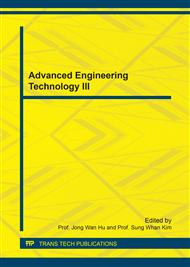p.463
p.468
p.474
p.480
p.486
p.492
p.496
p.502
p.508
The Synthesis of Variable Structure System for the Control of Quadrotor Spatial Motion
Abstract:
The method of the synthesis of multi-channel decentralized variable structure system for the control of quadrotor spatial motion is developed in this paper. The control law based on the formation of the sliding mode in the separate subsystems of each coordinates control is formed. Each subsystem includes two loops for Cartesian coordinates and relevant Euler angles control. The conditions of the existence of stable sliding mode are obtained. These conditions take into account essential dynamic reciprocal effect between all control channels. The application of proposed control law provides high control quality and maximal fast-action at any variations of the quadrotor parameters within given ranges. This control law does not require the identification of changing object parameters. Efficiency of synthesized control system is confirmed by numerical simulation results. The control system can be realized in the real time by simple technical means.
Info:
Periodical:
Pages:
486-491
Citation:
Online since:
June 2017
Authors:
Keywords:
Price:
Сopyright:
© 2017 Trans Tech Publications Ltd. All Rights Reserved
Share:
Citation:


